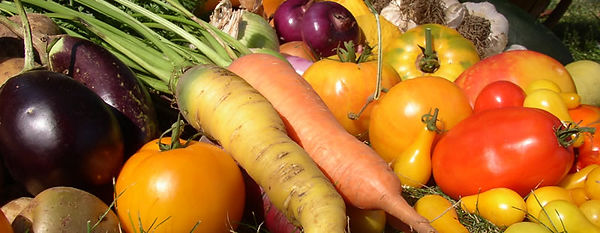Our Garden

We have planted extensive vegetable and flower gardens since purchasing the house and property in 1986. We began by immediately planting a large bed of asparagus, followed soon by a small orchard of apple, peach, pear, plum, and apricot trees. Over the years we have experimented with persimmon, almond, nectarine, Asian pear, pecan, and cherry trees, with varied levels of success, discovering that Midwest conditions do not support growing every possible fruit or vegetable. However, we now can consistently grow nearly all the garlic we need for the year as well as much of the tomatoes, onions, carrots, spinach, squash, peppers, broccoli, Brussels sprouts, raspberries, currants, and peaches we eat and serve. We do not use any chemicals on our plants, and instead utilize Permaculture principles, companion planting, and occasionally natural pest control methods. Of course, there are some bugs that are most effectively removed by hand, so we do some of that too. Our yard is interspersed throughout with flower beds, mostly containing perennial flowers.
See applied permaculture examples in our gardens.
See our season extending 'solar pod'.
Learn about our results with vegetable and
flower planting in partial
shade.
Our garden and flower beds have steadily grown to encompass approximately one-third of our three-acre yard. Ever since we began integrating permaculture principles into our gardening and lifestyle, all locations on the property have become fair game for raising food. See our permaculture examples page for some photos and discussion of how we apply these principles.
Read Mark's article Why I like to Garden discussing advantages of gardening and thoughts on how to get started.

Red chard at sunrise

Okra in bloom

Sweet potato harvest

Peas on a homemade trellis

Winterbor kale

Bitter melons, an Asian gourd we raise yearly.
In the mid 90's we built a 4'x8' mini greenhouse that we refer to as the 'solar pod'. This structure has been very useful for extending the growing season. Click here to learn how we use it to grow spinach in February and peppers in November.

The solar pod in early February with a healthy crop of early spinach inside.

The solar pod surpisingly maintains conditions warm enough for spinach to survive winter.

Peppers are one crop that do well here, although their life is cut short by the first freeze.

A small portion of the year's garlic crop, braided and hanging to dry.

The allium family grows well in our climate, especially if planted in late fall. Here is a row of shallots.
We try to utilize as a resource, whatever our yard produces. For example, we use our grass clippings and leaves as garden mulch. Many garden and yard weeds are fed to our chickens. We place any leftover weeds plus manure from the chickens into compost piles along with other garden weeds, then once composted spread it to fertilize garden and flower beds.

Our neighbor's pigs will be delighted to receive these sweet potato vines at season's end.

Grass clippings raked and ready for pickup to mulch the garden.

Compost piles made from garden waste and chicken manure.
We have created two hugelkulturs in our garden, one in 2010 and one in 2018. Of German origin, hugelkulturs are made by digging a trench one-to-two feet deep, filling it with rotting wood, bark, and brush, then covering the wood over with the original soil. Over subsequent years, the wood rots, creating a fertile soil.

Half-rotted logs to be buried in the bottom of the hugelkultur.

This 2010 hugelkultur shows the depth of the trench.

Our friend Clara dumping a wheelbarrow load of bark.

Filled trench with original soil in background.

Dirt filled back in using our 135 Massey Fergusson tractor, which was also used to dig the trench.

2011 garlic crop in the hugelkultur showing how the trunk of a hollow tree was used to hold the soil in place.